Breach of Contract Demand Letter Template
In the dynamic sphere of business, formal communication is the anchor that maintains order amid waves of challenges. Among the essential tools for safeguarding interests and fostering clarity is the Breach of Contract Demand Letter. When the currents of contractual commitments drift off course, this demand letter serves as a lighthouse, guiding the involved parties towards resolution and protecting business relationships.
Our comprehensive article will not only deepen your understanding of breach of contract letters but also equip you with practical insights on how to craft a cogent and effective letter. Moreover, we offer you a treasure trove of resources, including a free Breach of Contract Demand Letter Template and a Breach of Contract Demand Letter Sample. Our templates and samples will steer you clear of murky waters and set you on a path of clear and professional communication.
By navigating through this article, you’ll learn the essentials of identifying a breach, the significance of the demand letter in dispute resolution, and the elements that make a breach of contract letter assertive yet respectful.
Table of Contents
If you are looking for other templates or a general introduction to the concept of demand letters, please have a look at our demand-letter guide.
What is a Breach of Contract Demand Letter?
Alright, business-savvy folks, let's dive straight into the nitty-gritty of one of the most crucial tools in the business world – the Breach of Contract Demand Letter. Now, before your eyes glaze over at the legal jargon, stick with me. This isn’t as complicated as it sounds, and it’s super important.
Imagine you’re happily sailing the business seas when suddenly, a rogue wave in the form of a contract breach tries to capsize your ship. Now, you don’t want to go full Pirates of the Caribbean and unleash cannons, but you need to let the other party know they’ve got to correct their course. Enter the Breach of Contract Demand Letter, or as I like to call it, the "Hey, you need to fix this!" letter.
A breach of contract demand letter is a notice to an individual or party that has failed to perform as specified under a previously agreed upon contract. The letter should identify the party that breached the agreement, the date of the contract, and the specific actions conducted by the violating party.
In simpler terms, this letter is your way of formally saying, “Hey buddy, you didn’t stick to our deal, and that’s not cool. Here’s what went wrong, and here’s how we can sort it out before things get ugly.” It’s giving the breaching party a heads-up on their hiccup in fulfilling the contract's terms. Essentially, it’s about keeping things civil and giving them a chance to remedy the situation before anyone starts thinking about courts and lawsuits.
Now, let’s break it down a bit. The Breach of Contract Demand Letter serves a dual purpose. First, it's an elegant, professional nudge reminding the other party of their obligations. Second, it’s a solid piece of evidence if you ever have to show a judge that you tried to resolve the issue before resorting to legal action. Think of it as a pre-trial peace offering that could save both parties time, money, and stress.
Within this letter, you’ll usually find certain “demands” (hence the name) that the breaching party needs to fulfil to steer clear of legal trouble. These could range from making a payment that’s due, delivering goods that were promised, or even just a request to discuss and negotiate terms.
The most common types of Breach of Contract Demand Letters include:
- Payment Default: When one party fails to make the agreed-upon payment as specified in the contract, a demand letter can be sent to demand payment and seek resolution.
- Non-Performance: If one party fails to fulfil their obligations under the contract, such as not delivering goods or services as agreed, a demand letter can be used to request compliance or seek compensation.
- Material Breach: A material breach occurs when one party's failure to perform a significant term or condition of the contract undermines the entire purpose of the agreement. A demand letter can be sent to address the breach and seek appropriate remedies.
- Time Delay: When one party fails to meet the specified timeline or deadline outlined in the contract, a demand letter can be used to request timely performance or seek compensation for any resulting damages.
- Defective or Non-Conforming Goods/Services: If the delivered goods or provided services do not meet the agreed-upon standards or specifications, a demand letter can be sent to request correction, replacement, or reimbursement.
These are just a few examples of common breach of contract situations where demand letters are often used as an initial step in resolving the dispute. Each type of breach may require specific language and remedies tailored to the situation at hand.
In the coming sections, we'll be taking a closer look at what to consider before sending one of these letters, the costs involved, and the best way to draft them. Consider this your treasure map to smoother sailing in the business world.
Stay tuned, captains! 🏴☠️
Need a different format? Browse all demand letter templates.
Introducing Our Breach of Contract Demand Letter Templates
To assist you in resolving breach of contract issues, we have curated a selection of Breach of Contract Demand Letter templates. These templates provide a starting point for asserting your rights and seeking appropriate remedies. However, it is important to note that customization and legal advice are crucial.
While our templates offer guidance, they should be tailored to your specific situation. It is recommended to consult a legal professional to ensure alignment with legal parameters. Our templates provide a foundation, but remember that customization and legal advice are key.
Breach of Contract Demand Letter Template
BREACH OF CONTRACT DEMAND LETTER TEMPLATE
CONFIDENTIAL – FOR SETTLEMENT PURPOSES ONLY
From: [Your Name]
[Your Address]
[City, State]
[Zip Code]
Certified Mail
[Date]
Dear [Recipient],
Re: [Contract Title] - Breach of Contract Notice
I am writing to bring to your attention a significant breach of the contract titled "[Contract Title]" dated [Date] ("Agreement") that you are a party to. It is imperative that you understand the gravity of the situation and the consequences of your actions.
Unfortunately, it has come to our attention that you have failed to fulfill your obligations under the Agreement. The specific actions that constitute the breach are as follows: [Provide a clear and concise description of the actions or failures that constitute the breach].
While we are preparing to pursue legal recourse to protect our rights and seek appropriate remedies for the damages caused, we strongly believe that it is in both parties' best interest to attempt a resolution outside of formal litigation.
Please be advised that the matters discussed in this letter are intended solely for the purpose of settlement and are to be treated with utmost confidentiality. They should not be used or disclosed in any other proceedings or forums, in accordance with the laws of the State of [State].
Furthermore, it is essential that you understand your legal obligation to preserve all documents, materials, and information, in any form, that may be relevant to this breach or potentially discoverable in any future legal action arising from this breach. Failure to comply with document retention requirements may result in adverse legal consequences.
We strongly encourage you to engage in good faith negotiations and promptly resolve this matter to avoid further escalation. Unless we receive a satisfactory response by [Date], we will have no choice but to pursue all available legal and equitable remedies, including initiating formal litigation proceedings against you.
We anticipate your prompt attention to this matter and hope that we can resolve this dispute amicably and in a manner that upholds the integrity of the original Agreement. We kindly request that you respond to this letter by [Date].
Yours sincerely,
[Your Name]
[Your Position/Title]
[Your Contact Information]
BREACH OF CONTRACT DEMAND LETTER - FROM ATTORNEY TEMPLATE
[Attorney's Letterhead]
[Attorney's Name]
[Attorney's Address]
[City, State, Zip Code]
[Phone Number]
[Email Address]
[Date]
[Recipient's Name]
[Recipient's Address]
[City, State, Zip Code]
Re: Notice of Breach of Contract and Demand for Resolution
Dear [Recipient],
We represent [Client's Name], our client and the aggrieved party in the matter pertaining to the contract titled "[Contract Title]" dated [Date] (the "Agreement"). It is with great concern that we bring to your attention the substantial breach of the Agreement committed by you.
Our client has duly informed us of your failure to fulfill the contractual obligations as stipulated in the Agreement. Specifically, our client alleges that you have engaged in actions or omissions that directly contravene the terms and conditions of the Agreement, which are outlined as follows: [Provide a clear and concise description of the actions or failures constituting the breach].
Our client, in an effort to resolve this matter amicably and without resorting to costly and protracted legal proceedings, is prepared to explore the possibility of reaching a mutually acceptable resolution outside of court. We believe that it is in both parties' best interest to engage in good-faith negotiations with a view to remedying the breach and preserving the integrity of the contractual relationship.
Please be advised that this letter and its contents are subject to attorney-client privilege and should be treated as confidential. Any use or disclosure of this information for any purpose other than settlement negotiations or without our prior written consent may result in legal consequences.
Furthermore, we remind you of your obligation to preserve all documents, records, and any other evidence that may be relevant to this breach or potentially discoverable in any future legal proceedings arising from this matter.
We request that you respond to this letter within [Timeframe], acknowledging the breach and indicating your willingness to engage in negotiations. Failure to respond within the specified timeframe or failure to participate in good-faith negotiations may leave us with no alternative but to pursue all available legal remedies on behalf of our client.
We trust that you recognize the seriousness of this matter and the potential consequences associated with non-compliance. Our client remains open to a fair and expeditious resolution that restores the parties to their contractual positions.
Should you wish to discuss this matter further or propose a resolution, we invite you to contact our office at your earliest convenience.
Yours sincerely,
[Attorney's Name]
[Attorney's Bar Number]
[Law Firm Name]
[Attorney's Contact Information]
Breach of Contract - Payment Default and Demand for Payment Template
[Your Name]
[Your Address]
[City, State, Zip Code]
[Phone Number]
[Email Address]
[Date]
[Recipient's Name]
[Recipient's Address]
[City, State, Zip Code]
Re: Notice of Breach of Contract - Payment Default and Demand for Payment
Dear [Recipient],
I hope this letter finds you well. I am writing to address a significant breach of the contractual agreement between us, dated [Date], regarding the contract titled "[Contract Title]."
It has come to my attention that you have failed to fulfill your payment obligations as specified in the Agreement. I regret to inform you that your failure to make the payment as agreed upon constitutes a material breach of the contract.
I must emphasize the importance of resolving this matter promptly and amicably. Therefore, I hereby demand immediate payment of the outstanding balance of [Amount], which was due on [Due Date]. Please remit the payment by [Payment Deadline] to the following account:
Bank: [Bank Name]
Account Holder: [Your Name]
Account Number: [Account Number]
Routing Number: [Routing Number]
Your prompt attention to this matter is vital to avoid any further complications or potential legal action. If you require any additional information or have any questions regarding the payment, please do not hesitate to contact me.
I understand that unforeseen circumstances may have contributed to this payment default. If there are extenuating circumstances or challenges that prevented you from fulfilling your obligations, I encourage you to communicate with me so that we may explore possible solutions or payment arrangements.
Please be aware that continued failure to address this breach of contract and fulfill your payment obligations may leave me with no alternative but to pursue further actions to recover the debt owed, which may include engaging legal assistance or involving a collection agency.
I firmly believe in finding mutually agreeable resolutions, and I remain open to discussing any viable alternatives to settle this matter. It is my sincere hope that we can rectify this breach and maintain a positive business relationship moving forward.
To facilitate a resolution, I kindly request that you respond to this letter within [Timeframe], acknowledging the breach and providing your proposed plan for payment or any other mutually acceptable resolution.
Thank you for your immediate attention to this matter. I look forward to resolving this dispute in a fair and prompt manner.
Sincerely,
[Your Name]
[Your Contact Information]
Note: This is a general example of a demand for payment letter. The actual information and phrasing should be adapted based on your specific situation and legal counsel, as applicable. This information does not constitute legal advice and it is always best to consult with a legal professional in your area for tailored guidance.
Are you looking for other demand letter templates?
Klik here to browse our full library.
What Should You Consider Before Sending a Breach of Contract Demand Letter?
Let’s jump right into the next crucial phase – what to consider before you start drafting your Breach of Contract Demand Letter. Picture yourself as a detective prepping for a case. You’ve got to get your facts straight and know what you're talking about. So, grab your magnifying glass, my friends, because here’s what you need to analyze:
- Evaluate the Breach and Its Seriousness: Before sending your letter, take a step back and analyze the situation. How significant is the breach? Is it a minor hiccup, or did it throw your entire plan off the rails? This assessment will help you set the tone for your letter.
- Understand the Terms of the Contract: It’s crucial to know your contract like the back of your hand. Ask yourself what the other party was supposed to do under the contract. This information is the backbone of your argument. If you’re murky on the details, your letter’s going to reflect that.
- Document the Evidence: Make sure you have proof to back up your claims. Document all correspondence and actions related to the contract. These documents will serve as your ammunition if things escalate.
- Consult a Legal Advisor: You don’t need to be a legal eagle, but it’s smart to consult someone who is. Talk to a legal advisor to ensure you're on solid ground. They can also help you with the right language and tone for your letter.
- Consider Alternative Dispute Resolutions: Legal battles can be a drag – they’re costly, time-consuming, and stressful. Before you send that letter, ponder over whether it’s worth it. Sometimes, alternative solutions like mediation or negotiation can save you a whole lot of trouble.
Now, let's deep dive into what you need to look for while reviewing the contract:
- What Was the Other Person Supposed to Do?: Clearly lay out the expectations set in the contract. For example, if they were supposed to paint your office, but they never showed up, they breached the contract.
- Did They Fulfill Their Obligations?: Compare their actual actions to what was agreed upon. This will help you articulate the nature of the breach.
- Money Matters: How much were you supposed to pay them, and what was their mode of payment? Were there any discrepancies? Keep this info at your fingertips.
- Timelines: Were there deadlines set in the contract? Did the other party honour them? Time is money, and you need to emphasize this if they missed deadlines.
- Verbal Agreements: Just because it wasn't written down doesn't mean it doesn't count. If you had a verbal agreement, document everything you can recall about the conversation. It’s harder to prove, but it’s still valid.
So, my savvy business comrades, do your homework. Make sure you’ve got all your ducks in a row before you put pen to paper. Your Breach of Contract Demand Letter needs to be as solid as a ship’s hull to make sure you sail through this storm unscathed.
Anchors aweigh! 🚢
What is the Cost of Drafting and Sending a Breach of Contract Demand Letter?
All aboard, savvy navigators! We’re steering into the monetary waters today. That's right, let’s talk doubloons – or, in simpler terms, the costs involved in drafting and sending a Breach of Contract Demand Letter. Keep your spyglass handy, as we set sail:
- Costs Associated with Drafting the Letter: If you choose an attorney, expect hourly charges. Opting for an online service? They might charge a flat fee. But guess what? The amazing folks at Debitura have got your back! We’re offering free templates in this article to help you draft that letter. It's like finding a treasure chest on a deserted island!
- Costs of Delivery Methods: We need this letter to reach its destination, safe and sound. Certified mail or courier services are perfect for this. It's like sending your message to the most trustworthy pirate on the seas.
- The Balance Between Cost and Potential Recovery: Here’s where you need your captain’s hat on. Weigh the costs against the potential recovery. If the treasure you’re after doesn’t match your efforts, you might need to rethink your course.
- Get Legal Advice Without Draining Your Chest: Not sure if you need legal advice? No worries, we at Debitura have another treasure for you! We can collect three quotes from local attorneys for you, absolutely free. Yes, you read that right! It's like having a crew of expert navigators at your disposal without costing a single doubloon.
So, there you have it, my fellow seafarers! With Debitura on your side, you’re not just sailing the rough seas; you’re commanding them. Grab your compass, plot your course, and let's make sure this journey is both successful and cost-effective.
Set sail, shipmates! 🏴☠️
Debitura is not a law firm or debt collection agency. Instead, we are a platform that connects you with vetted local collection agencies and lawyers worldwide. Leverage our network of 500+ local collection agencies and lawyers across 183 markets for effective, on-the-ground debt recovery.
•Hand-picked Agencies: We connect you with the best debt collection agencies and law firms worldwide.
•Performance-Based Selection: Our partners are constantly tested and evaluated to ensure top performance.
•Access to the Best: Only the best-performing agencies remain in our network, giving you access to superior debt recovery services regardless of where your debtors are.
Simplify your legal framework with our 'No Cure, No Pay' standardized agreement across all local partners. Ensuring convenience for international creditors, we offer a standard debt collection agreement across jurisdictions and local partners.
•No Cure, No Pay: Enjoy risk-free pre-legal debt collection with no upfront costs.
•Standardized Pre-legal Agreement: Our partners adhere to a transparent and standardized debt collection agreement, streamlining your legal framework across jurisdictions and partners.
•Competitive Legal Rates: For legal interventions (lawsuits, debt enforcement, insolvency proceedings, etc.), receive up to 3 competitive quotes from our network of local attorneys.
Explore our pricing
Quick, professional and hassle-free B2B and B2C debt collection. 87% Consistent recovery rate – a testament to our global effectiveness. 4.97/5 Average rating from a diverse global clientele of over 5,000.
Register for a free profile and effortlessly upload your claim within just 2 minutes. We match your request with our expansive network of over 500 attorneys and collection firms to get you started quickly.
Access competitive legal action rates worldwide through our network of 500+ local attorneys. For legal interventions (lawsuits, debt enforcement, insolvency proceedings, etc.), receive up to 3 competitive quotes from our network of local attorneys.
Consolidate all your cases worldwide in one platform. Enjoy seamless case upload, management, and reporting. Upload cases manually, via CSV files, or utilize our REST API for custom integrations with full technical support from our developers.
What are the Advantages of Sending a Breach of Contract Demand Letter?
Dear trailblazers of commerce, let’s unfurl the sails as we navigate through the benefits of sending a Breach of Contract Demand Letter. In the open seas of business, it’s imperative to know the winds that favor us. So, let's hoist the anchor and delve into the advantages:
- Demonstrating Seriousness in Pursuing the Matter: Dispatching a Breach of Contract Demand Letter is akin to hoisting your flag high. It signifies that you are resolute and are willing to invest time and resources to ensure the contract’s terms are honoured. This, my esteemed colleagues, is often enough to make the other party realize that they need to straighten their course.
- Creating a Legal Record: In the annals of legal affairs, documentation is the compass that guides the way. By sending this letter, you are creating a legal record of your efforts to resolve the issue. Should the need arise to steer into the courts, this record stands as a testament to your earnest endeavours.
- Possible Quick Resolution Without Court Intervention: As esteemed navigators of commerce, we know that court proceedings can be like sailing through stormy waters – tumultuous and unpredictable. A Demand Letter can often act as the fair wind, guiding the parties to a swifter resolution without the need to enter the stormy domain of legal proceedings.
- Opening Channels for Negotiation: A Breach of Contract Demand Letter can serve as an olive branch, even though it may not appear so initially. It invites the other party to the negotiation table. It’s an opportunity to re-chart the course collaboratively and find mutual solutions, like re-negotiating terms or agreeing on an alternative service date.
Let me add a word to the wise. In certain jurisdictions, sending a demand letter might be a prerequisite before initiating legal action. It showcases your willingness to resolve matters amicably and is viewed favourably.
In summary, my distinguished peers, a Breach of Contract Demand Letter is not just a parchment of grievances; it's a powerful tool in your captain’s chest. It demonstrates resolve, creates legal precedence, potentially avoids the whirlpools of court proceedings, and establishes avenues for constructive dialogue.
May your compass be true, and your resolve steadfast. Bon Voyage! 🌟
What are the Key Elements to Include in a Breach of Contract Demand Letter?
As we sail forward, it’s time to unroll the map and examine the key elements to include in a Breach of Contract Demand Letter. Think of this letter as your trusty vessel; it needs to be sturdy and well-equipped to make it through the stormy seas of contract disputes. Here's how to craft a vessel worthy of your voyage:
- Identifying the Parties Involved: First and foremost, specify the captains of both ships. Clearly identify who is sending the letter and who it's being sent to. Full names and addresses should be included, so there's no confusion about the parties involved.
- Specification of the Contractual Breach: Detail the storm that led you here. Include specific sections of the original contract or agreement that were breached. For instance, if your landscaper didn’t trim your hedges on the date agreed, cite the exact clause in the contract that specifies this duty.
- Timeframe for Resolution: As the adage goes, time and tide wait for none. Specify a reasonable timeframe, usually between 7 to 14 days, for the other party to respond or take corrective action. Be clear that this is the calm before the storm, and failing to act might result in legal tempests.
- Suggested Remedy or Action: Chart a course for calmer waters by suggesting how the matter can be resolved. Whether it’s a refund, completion of services, or an alternative arrangement, be clear on what needs to be done to drop anchor on the dispute.
- Include How Much Booty is Owed: If this is a dispute involving pieces of eight, clearly state the amount owed. Specify how you want the treasure delivered – for example, by check – and include the address where it should be sent.
- Your Contact Information: Give them a way to send a message in a bottle. Include your email address and any other contact information where you can be reached for follow-up questions.
- Legal Consequences: Finally, make sure they know the cannons are ready. Politely but firmly mention that failure to resolve the breach within the provided timeframe may lead to legal action.
Step-by-Step Instructions on How to Write a Breach of Contract Demand Letter
Esteemed readers, let’s raise the curtain on the nitty-gritty of writing a breach of contract demand letter. The pen is mightier than the sword, so wield it with precision. Let's craft an effective letter that is cogent, clear, and legally sound.
- Crafting an Effective Opening Paragraph: Commence with a professional letterhead that includes your name, address, phone number, and email. Then, state the delivery method (e.g., CERTIFIED MAIL) below the letterhead. Create an address block for the recipient and date the letter. Address the recipient formally, such as “Dear Mr. Doe,” and open with a clear statement of purpose, e.g., “I am writing to address a breach of our contract dated...”.
- Detailing the Breach Concisely: In this section, detail the breach with surgical precision. Identify the specific part of the contract that was violated and describe what the other party did or failed to do. Include dates and avoid judgmental or inflammatory language. Stick to facts.
- Stating the Expected Remedy: Chart the course for resolution by describing any remedy provided for in the contract. If, for instance, the contract specifies interest on late payments, mention this along with the relevant section of the contract.
- Concluding with a Strong yet Professional Tone: Conclude by specifying what actions you will take if the breach is not resolved within a certain timeframe, usually 30 days. Be firm but not threatening. For instance, say “I will be forced to take appropriate legal action” rather than “I will sue you”.
- Adding Relevant Attachments: Attach any relevant documents, such as a copy of the contract or supporting materials, that lend weight to your claims.
- Proofreading and Legal Review: Before sending your letter, review it for spelling and grammar. It’s also wise to have a legal professional review the letter to ensure it is compliant with legal standards.
- Create a Signature Block: Include a closing, a space for the date, a line for your signature, and your typed name beneath the line. Common closings include "Sincerely," or "Yours Truly."
By adhering to these steps, you can create a breach of contract demand letter that is both powerful and professional. Remember, your letter is not just a notification; it's a strategic tool in the negotiation process, so use it wisely.
How to Send the Breach of Contract Demand Letter and How to Follow Up
Sending a breach of contract demand letter is an art and science combined, involving the careful balancing of sternness and diplomacy. In this section, we will unfurl the sail and explore the nautical chart that guides you through the process of sending the letter and effectively navigating the waters thereafter.
- Sending the Letter: Choosing the right method to send your demand letter is crucial. Certified mail is often a favored choice, as it allows you to track the letter and be informed once it’s delivered. This can be vital for keeping tabs on the timeline, especially if your letter includes specific deadlines. However, it’s important to note that requesting a signature upon receipt can sometimes be a double-edged sword. While it is an effective method for deliveries to businesses, obtaining a signature can be a Herculean task when it comes to residential addresses. Therefore, weigh the pros and cons before opting for this requirement. Regardless of the method you choose, make sure to keep a copy of the letter for your records. This can be a critical piece of evidence if you end up in a courtroom.
- Monitoring the Receipt of the Letter: Once the letter is en route, it's time to keep a watchful eye on its voyage. If sent via certified mail, you can use the tracking number to monitor the progress and confirm its arrival at its destination. This confirmation is a crucial timestamp, enabling you to track the timeframe you’ve allotted for a response.
- Being Prepared for Negotiation or Settlement: With the letter delivered, be ready for the winds to change. The recipient may reach out to discuss the matter. It's vital to be prepared for this eventuality and to keep an open mind. Sometimes, reaching an amicable settlement or negotiation can save both parties time, money, and stress compared to the alternative of a legal battle.
- Considering the Next Steps if There Is No Response: If the seas remain calm and there’s no response within the timeline you’ve set, it’s time to consider your options. You might want to send a follow-up letter as a warning shot, or start preparing to take legal action.
- Keeping Communication Records: Throughout this journey, it’s paramount to maintain a detailed logbook. Record all communications, including dates, times, and the nature of the content. This logbook can prove to be an invaluable resource if the situation escalates.
Consulting an Attorney for Possible Legal Action: If the horizon remains bleak and the dispute is still dead in the water, it may be time to consult an attorney. A legal expert can provide advice on whether it is prudent to pursue the matter through small claims court or another legal avenue.
.webp)

.svg)



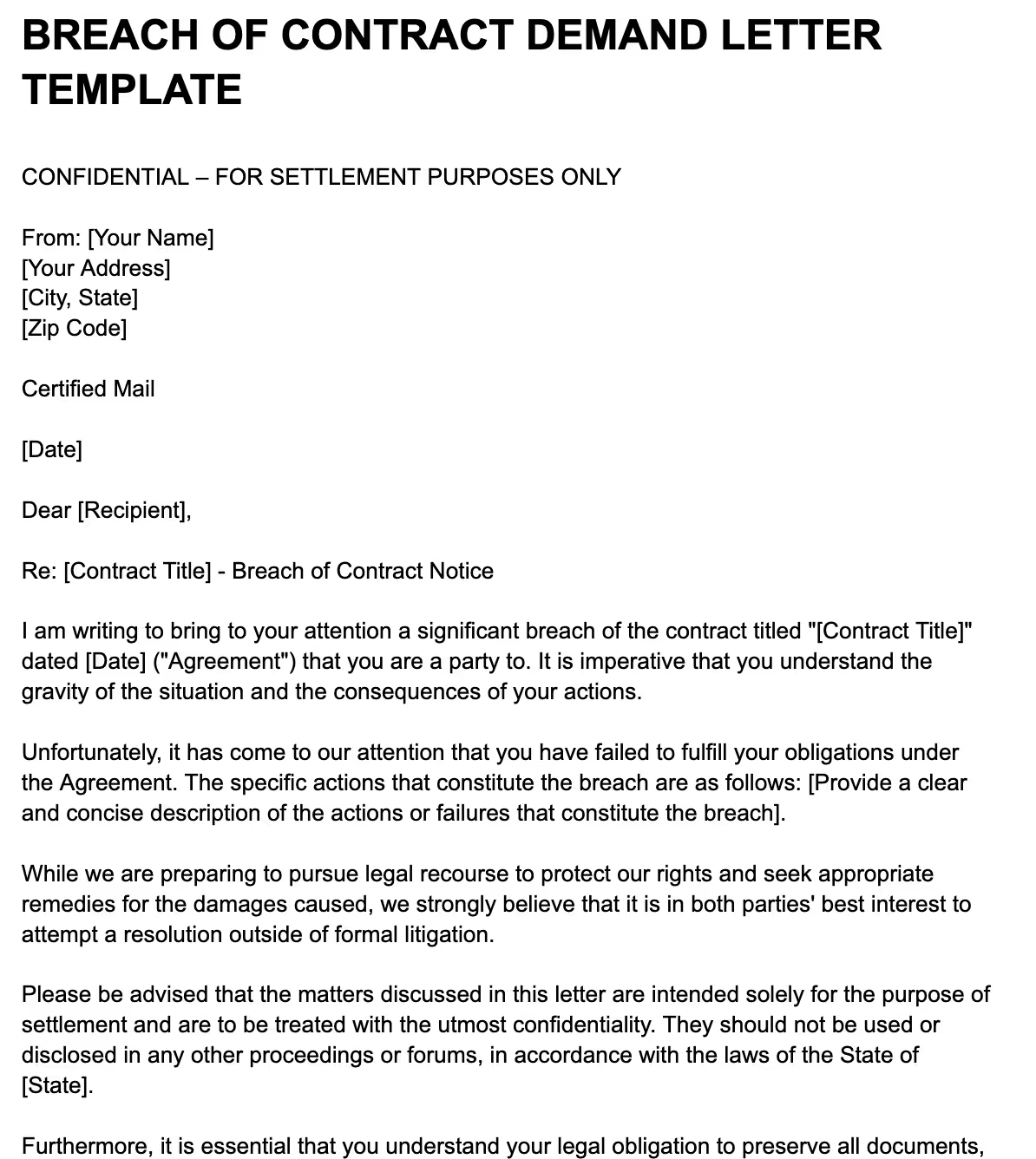
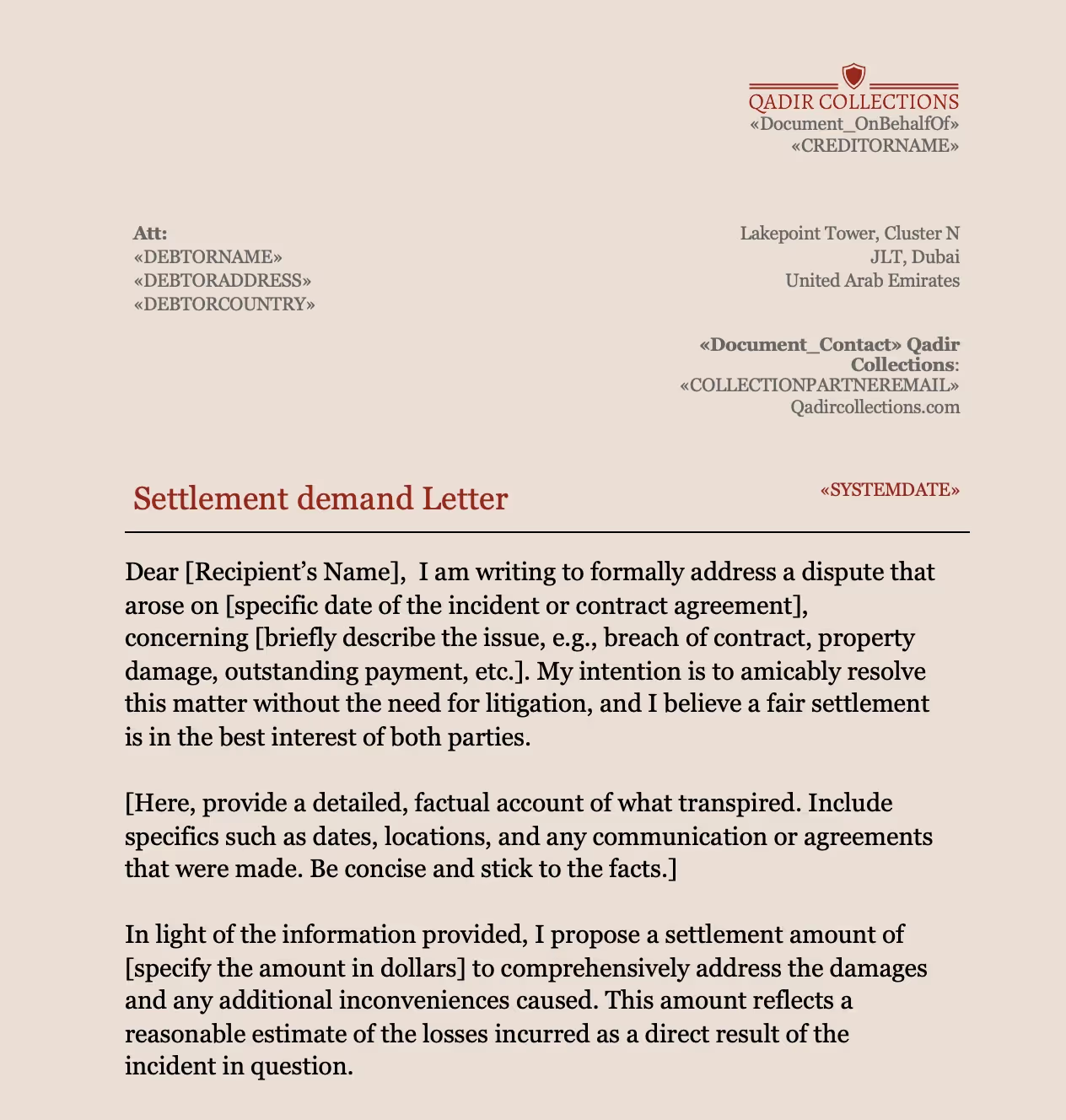
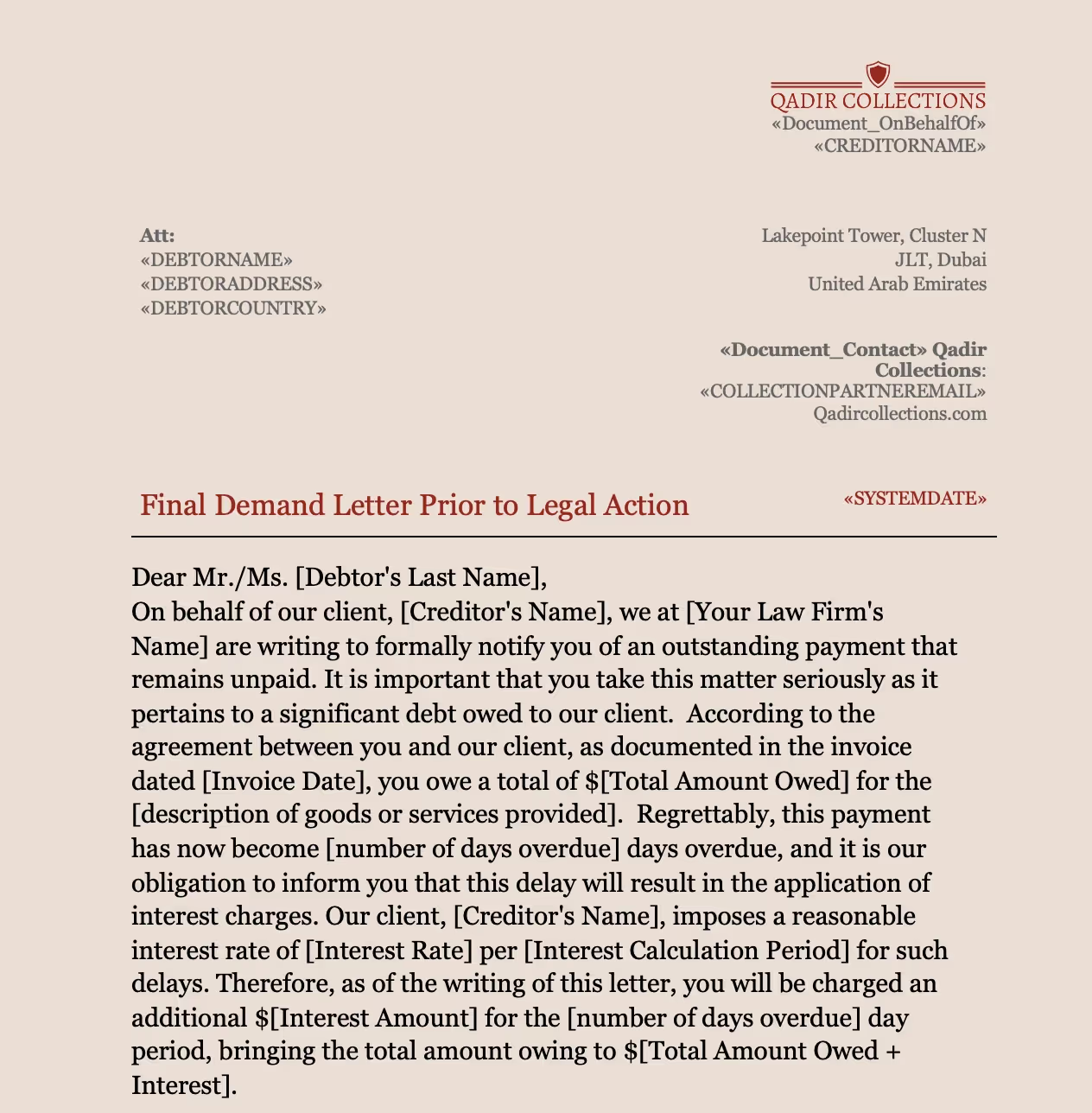

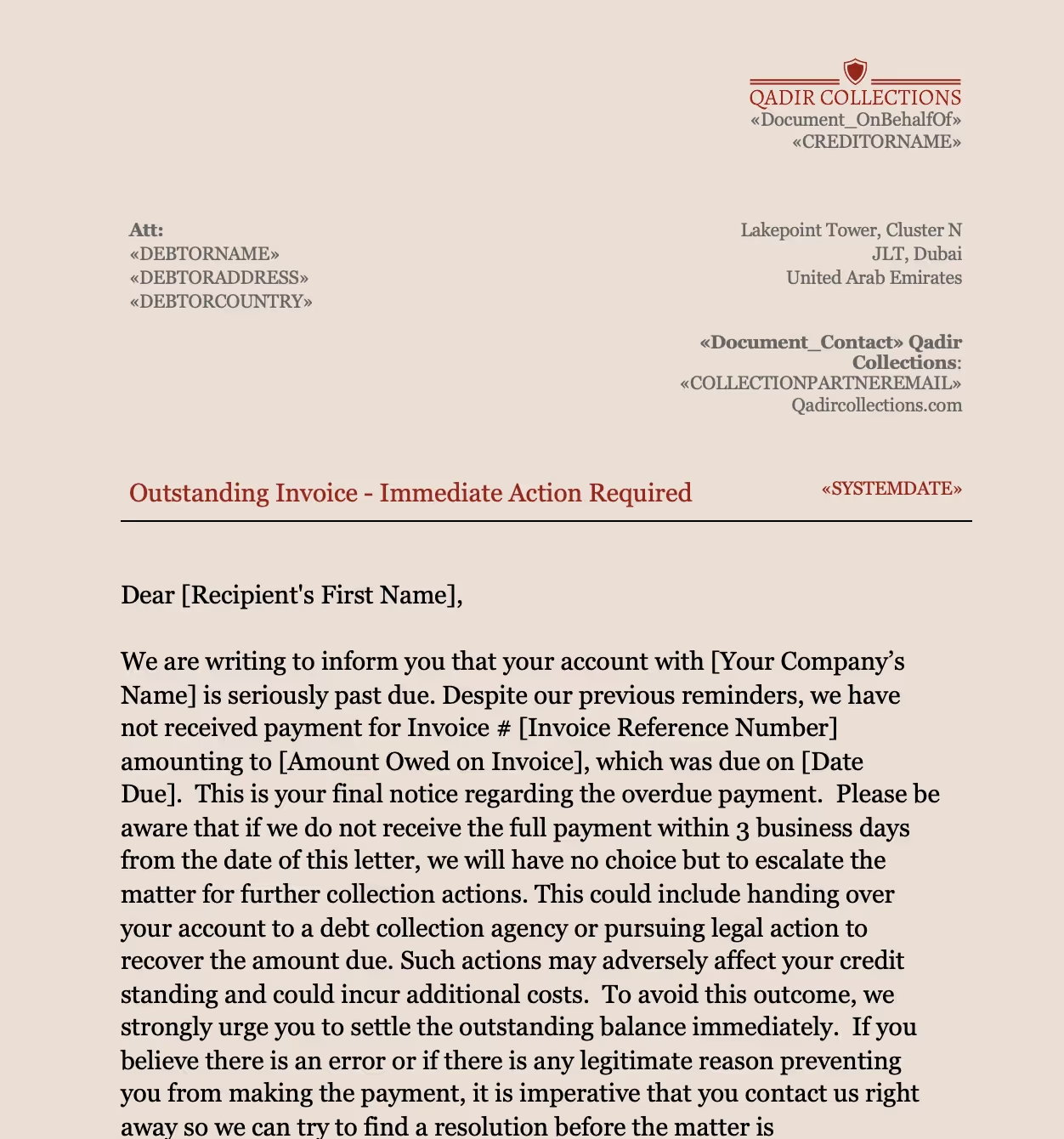

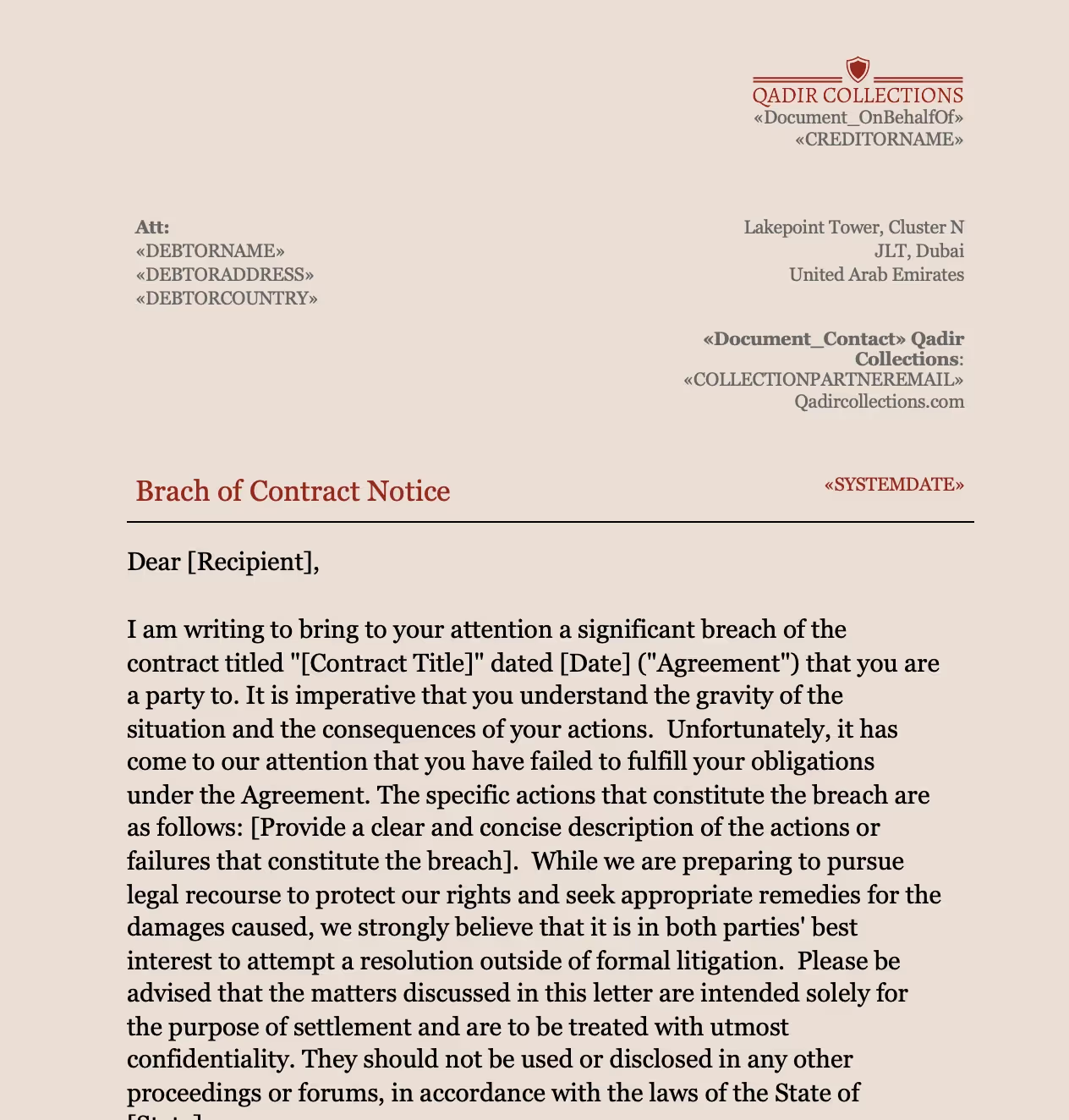
.webp)
